British and European Car Spotters Guide - 1943 |
|
|
 |
|
|
|
 |
 |
Humber F.W.D. Cross-Country Chassis Saloon |
| |
Also see: Humber Car Reviews | Rootes Production 1942 - 1944 |
| |
Humber F.W.D. cross-country chassis with special four-seater saloon bodywork designed by Thrupp & Maberly Ltd in 1943. It used the standard chassis and front end, and featured a fabric covered roof. It is uncertain whether any were actually produced. A soft-top Tourer variant was also designed, with bodywork similar to that of the Super Snipe Tourer (except for six seats and folding windscreen).
|
|
 |
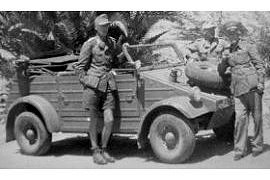 |
 |
Kubelwagen Type 82 |
| |
Also see: Volkswagen Car Reviews | The History of Volkswagen |
| |
Revisions were made to the Kubelwagen Type 82 in 1943, including a revised dash and a new 1,131 CC motor producing more power than the original 985 CC unit. Prototype versions were assembled with four-wheel drive and different engines, but none offered a significant increase in performance or capability over the existing Type 82 and the designs were never used. Volkswagen production ceased temporarily at the end of the war, but more than 55,000 Kübelwagen vehicles were produced during its production run and the vehicle had proved itself to be surprisingly useful, reliable and durable. VW resurrected the basic Kübelwagen design several years after they resumed production in post-war Wolfsburg as the Type 181. |
|
 |
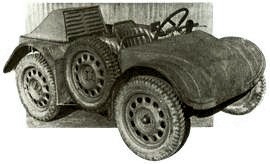 |
 |
SS prototype Ultra Lightweight Model VA |
| |
Also see: Jaguar Car Reviews | The History of Swallow Sidecars |
| |
SS Cars Ltd (later Jaguar) produced this prototype Ultra Lightweight car in 1943. It was powered by a V-twin 1096-cc JAP engine, driving through a lockable differential, and was intended as a possible replacement for the motorcycle with sidecar combination. Following unsatisfactory test results, the project was soon abandoned. |
|
 |
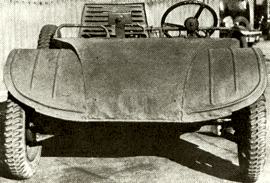 |
 |
SS prototype Ultra Lightweight Model VA |
| |
Also see: Jaguar Car Reviews | The History of Swallow Sidecars |
| |
SS Cars Ltd (later Jaguar) produced this prototype Ultra Lightweight car in 1943. It was powered by a V-twin 1096-cc JAP engine, driving through a lockable differential, and was intended as a possible replacement for the motorcycle with sidecar combination. Following unsatisfactory test results, the project was soon abandoned. |
|
 |
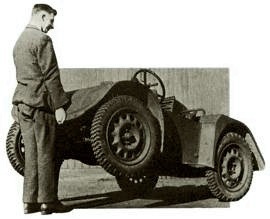 |
 |
SS prototype Ultra Lightweight Model VA |
| |
Also see: Jaguar Car Reviews | The History of Swallow Sidecars |
| |
Shown lifting the SS Prototype Ultra Lightweight Model VA is Mr W. T. F. (Wally) Hassan, one of the designers, who remained with Jaguar Cars Ltd until his retirement in 1972. Mr Hassan, as engineering director, was a key man in the development of many Jaguar designs, including the remarkable V12 engine. |
|
 |
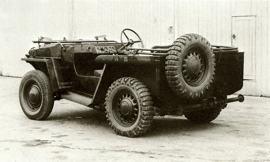 |
 |
Standard 12 HP |
| |
Also see: Standard Car Reviews | The History of Standard |
| |
Standard 12 HP Car, 5-cwt. 4 x 2, WVEE 493 was more like the 'Jeep'. It had a wheelbase of 75 inches and turned the scales at 19 cwt. Built in 1943, it was fractionally lighter and smaller than the 'Jeep', but did not reach the quantity production stage, probably because Lend- Lease supply of 'Jeeps' was maintained at a higher rate than anticipated. |
|
 |
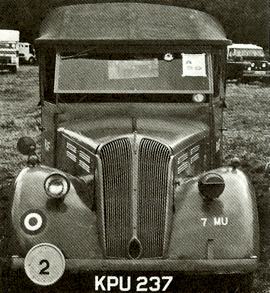 |
 |
Standard 12 HP Light Utility |
| |
Also see: Standard Car Reviews | The History of Standard |
| |
Standard 12 HP Light Utility as produced for the British Army. This model had a rigid front axle with longitudinal leaf springs and a wire-mesh radiator grille. The Standard had a military pattern cab, unlike the Austin and Hillman Light Utilities which are also seen. |
|
 |
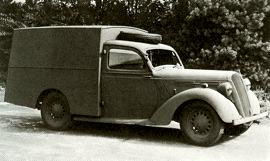 |
 |
Standard 14 HP 12-cwt Van RAF |
| |
Also see: Standard Car Reviews | The History of Standard |
| |
Standard 14 HP 12-cwt Van of the Royal Air Force. Like the later Light Utility models. this vehicle had a beam-type front axle. unlike a 10-cwt version (also for the RAF) which had the 12 HP engine, 8 ft 4 in (v. 9 ft) wheelbase and independent front suspension Van shown has forward end of saloon; others had a rather square cab and a wire-mesh radiator grille. |
|
 |
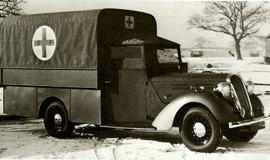 |
 |
Standard 20 HP Van |
| |
Also see: Standard Car Reviews | The History of Standard |
| |
The Standard Flying Twenty chassis with ambulance bodywork and canvas top cab. This 20 HP chassis, which was not to be continued after the war, differed from the 14 HP in having a six-cylinder engine of 2664cc and 9 ft 8 in. (v. 9 ft.) wheelbase. Bore and stroke were the same as for the four-cylinder 14 HP, being 73 x 1-6 mm. As can be seen, the hood was slightly longer. The RAF used similar ambulances on the 14 HP chassis for domestic use in the UK. |
|
 |
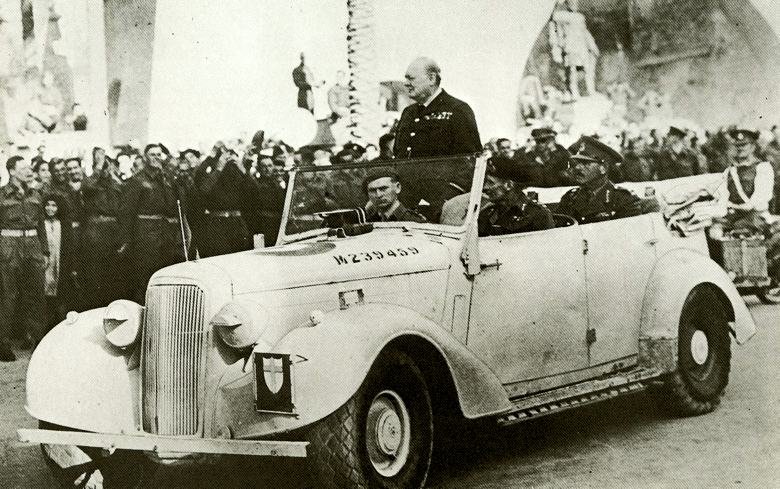
Humber Super Snipe, dubbed 'Old Faithful', pictured in action with Winson Churchill and General Bernard Montgomery in Alexander, Tripoli in February, 1943. |
|
